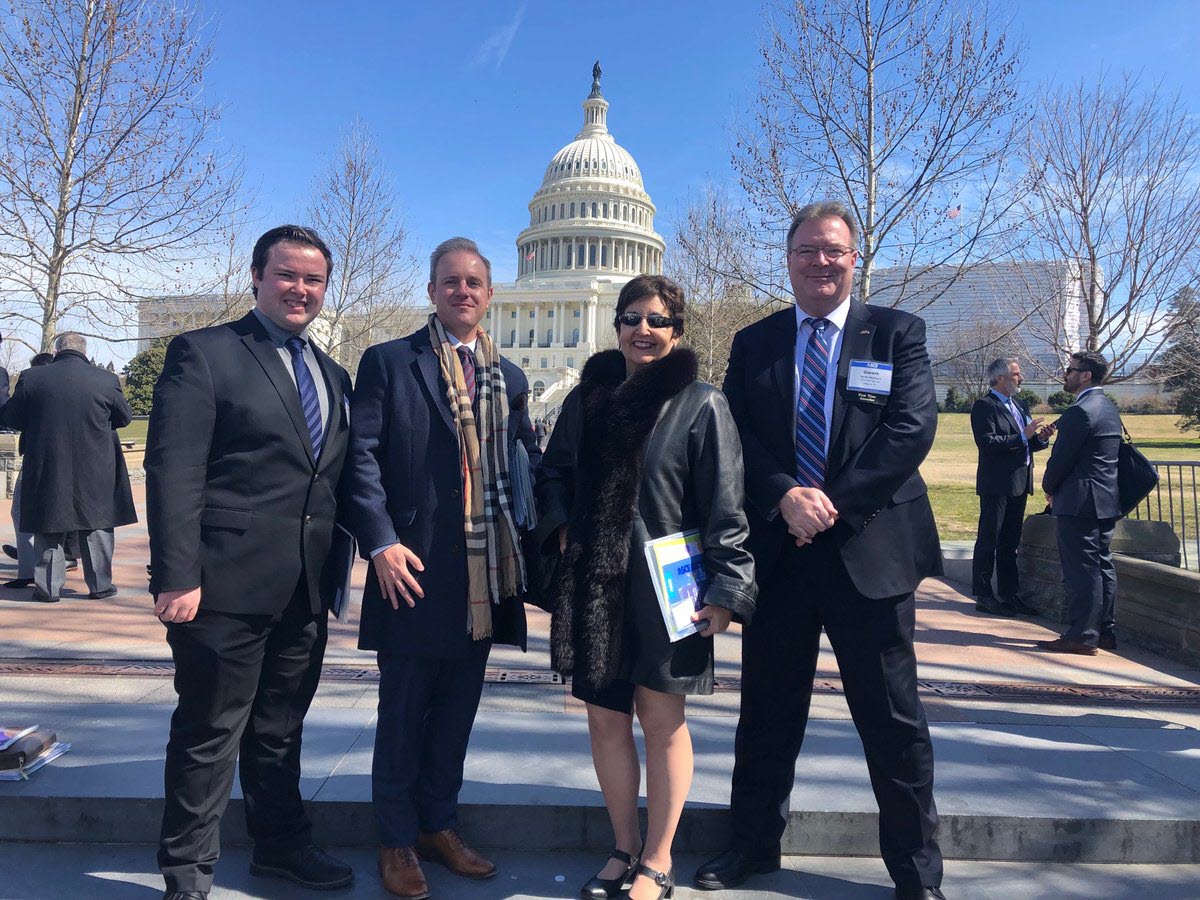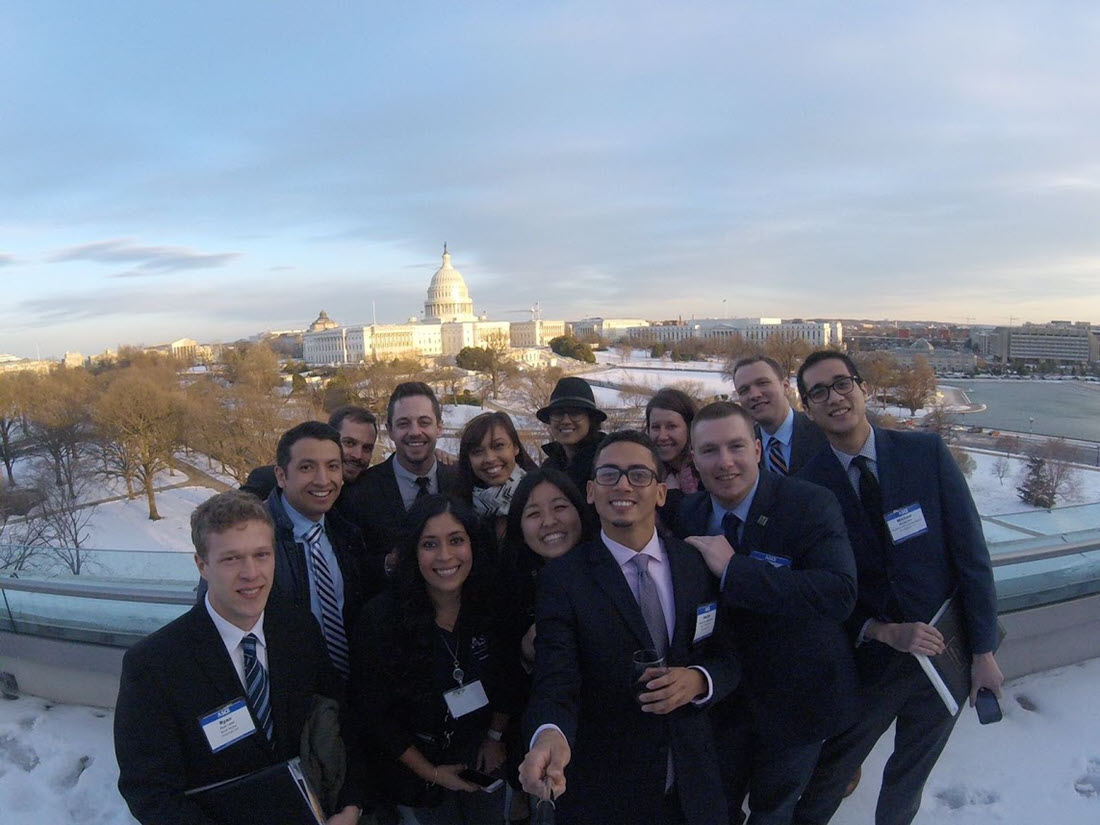There’s a lot to be said for the old adage about prizing the journey over the destination.
But sometimes the destination is pretty good too.
Civil engineers celebrated Friday’s news that the House of Representatives voted to pass the Infrastructure Investment and Jobs Act, a five-year, $1.2 trillion bill that constitutes the country’s largest investment in infrastructure in nearly a century.
“This is a historic time for our country, and ASCE’s members should be proud they played a substantial role in getting this bill crafted and passed,” said ASCE President Dennis D. Truax, Ph.D., P.E., D.WRE, F.ASCE. “This success has its foundation in over two decades of investment in the Report Card for America’s Infrastructure program. Recognized as ‘honest brokers’ focused on life, health, and safety of the public, ASCE’s advocacy efforts helped us see this day come.”
The bill, which passed the Senate in August, was signed into law by President Biden Nov. 15 at a ceremony attended by Truax.
 Robin Kemper
Robin Kemper For many ASCE members, their infrastructure advocacy journeys date back decades.
There’s Rebecca Shelton in Georgia.
She started working on her state’s infrastructure report card in 2008 and got hooked.
“Over time it’s just something I’ve really enjoyed – being able to see the results of my work,” said Shelton, P.E., F.ASCE, assistant director for the Gwinnett County Department of Water Resources. “I work for a local government because I enjoy helping people. We provide safe drinking water to nearly 1 million people every day, and we take that very seriously. I just want to live in a community, work in that community, contribute to that community, and ASCE has really helped me do that.”
She’s seen firsthand in Georgia the benefits of infrastructure investment at a state level, so the federal bill is a welcome investment.
“I think it’s really exciting to see our elected officials understand the connection between infrastructure investment and jobs, the economy, and quality of life,” Shelton said.
“We’re seeing them understand that we need to invest in our future through infrastructure.”
And there’s Katherine Colburn in Utah.
Colburn is that rare civil engineer with an English degree (she changed career paths in her 20s), and she uses those verbal gifts to help better communicate with elected officials and community members about infrastructure needs.
“I’ve always believed in the whole power of narrative,” said Colburn, EIT, A.M.ASCE, a rotational engineer for the Utah Department of Transportation. “The bipartisan infrastructure bill, to me, is evidence that they’ve heard us as technical professionals.”
Colburn joined the ASCE Utah Section’s State and Government Relations Committee in 2018, most recently serving as a chapter author on the state’s infrastructure report card. She loves the process. If anything, it’s the twists and turns leading up to the Infrastructure Investment and Jobs Act that she enjoys.
“In my mind, the whole narrative behind this is it’s democracy at its best, politics at its best,” Colburn said. “Really breaking down these silos and having these conversations to get the best solutions. We can’t have the best solution if there are only a couple of people in the room, right? If you don’t get enough viewpoints, there could be something that you haven’t seen in the design phase that if you had the right people in the room, they could have told you what your problem was.
“As engineers, you learn that early on – the importance of collaborating as a team.”
Colburn relishes the promise of what the increased funding could do for engineering infrastructure in the United States.
“It would be disingenuous and inaccurate to say that any of these solutions are going to be simple,” Colburn said. “But engineering as a profession is well-positioned to tackle complicated problems. We take in a lot of inputs from a lot of different areas. No one implements better than engineers.”
And there’s Jim Kilps in California.
He joined ASCE more than 30 years ago and took every leadership position in the Society he could find. More recently he wanted a new way, to stay involved in ASCE. Advocacy looked like the perfect fit.
“I was particularly impressed with ASCE’s Key Contact program,” said Kilps, P.E., M.ASCE, a senior engineer for the Imperial Irrigation District in Southern California. “They do a great job of tracking legislation and especially with the Report Card for America’s Infrastructure.”
He threw himself into the advocacy work three years ago, including a recent meeting at Rep. Scott Peters’ (D-CA) field office to discuss infrastructure. Now he’s celebrating one of the largest infrastructure steps forward in generations.
“It’s going to have a tremendous impact,” Kilps said. “You could really call it a culmination.”

It’s easy to see why the Infrastructure Investment and Jobs Act does indeed feel like a culmination of all those years of ASCE advocacy efforts. The bill includes funding to repair and modernize critical assets for almost all the 17 categories in the 2021 Report Card for America’s Infrastructure.
But it might not be quite accurate to call the bill a destination after all for those ASCE members who have been working on infrastructure solutions.
The journey continues for Rebecca Shelton. She’s already looking forward to the 2022 advocacy calendar and the opportunities afforded by this legislative success.
“It never ends, right? What is the next step?” Shelton said. “It’s a great infrastructure bill but it’s not going to be the end. Infrastructure continues to age, the need for additional infrastructure continues, so it’s not the end. It’s just the beginning.”
Read ASCE's official statement on the Infrastructure Investment and Jobs Act.



